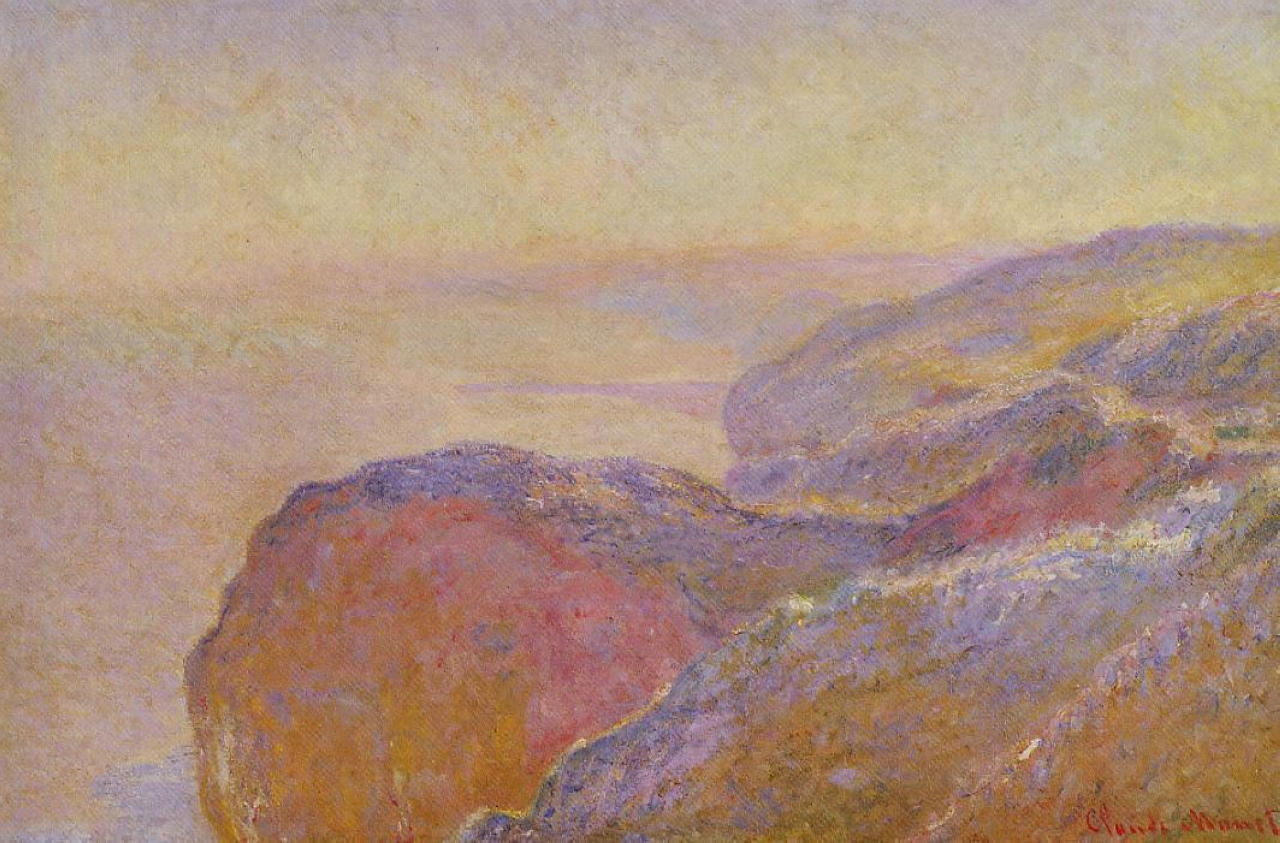artsMonet.com
Claude Monet 1840-1926
Claude Monet - At Val-Saint-Nicolas near Dieppe in the Morning 1897
 At Val-Saint-Nicolas near Dieppe in the Morning |
Catalogue Note from Sotheby's
This dramatic cliff-top view of the Atlantic dates from Monet's painting expedition in Pourville in 1897. Monet had worked in this location the year before and marvelled at the splendor of the natural landscape. Returning to the same site a year later, the artist found his access to it seriously threatened. “It so happens that the spot at which I have begun so many canvases, higher up, towards Dieppe, is going to be closed to the public; a Dieppe company has rented all of this land starting from the Val Saint-Nicolas in order to use it for playing all sorts of English games, as well as archery and pigeon-shooting” (Quoted in Daniel Wildenstein, op. cit., p. 606). Monet lamented the destruction of such unspoiled terrain and captured its beauty in several more canvases, adopting almost exactly the same vantage point.
These paintings of the Normandy coast were the first works Monet completed after the exhibition of his Rouen Cathedral series. Thus in this and other paintings from the series, his concern with capturing the fugitive effects of light and atmosphere and the way they transform a landscape predominates. Paul Hayes Tucker commented, “What is striking about these pictures is their rather extra-ordinary palette of pinks, soft oranges, sea greens, pale violets, and light blues – pastel shades that he had not employed as consistently as in earlier works” (Monet in the 90s (exhibition catalogue), Museum of Fine Arts, Boston, 1990, p. 212).
Tucker has written about the pictures that Monet completed during his sojourn on the Normandy coast in the late 1890s: "The coast also offered Monet the opportunity to state his beliefs about the value of landscape painting in a direct and personal way, instead of employing symbols such as cathedrals, poplars, or grain stacks. It provided him only with the most basic materials: earth, sea, and sky. Moreover, because he was free to choose a variety of motifs, he was also able to challenge the restraining assumption that he was interested exclusively in capturing fleeting moments of time or specific effects of light. In fact, many of the pictures in these series are of an indeterminate time of day .... Going back to the Channel also allowed Monet to return to his roots, assess his previous work, and test the Northern tradition of landscape painting on which his art had so long and firmly rested" (ibid pp. 193-94).